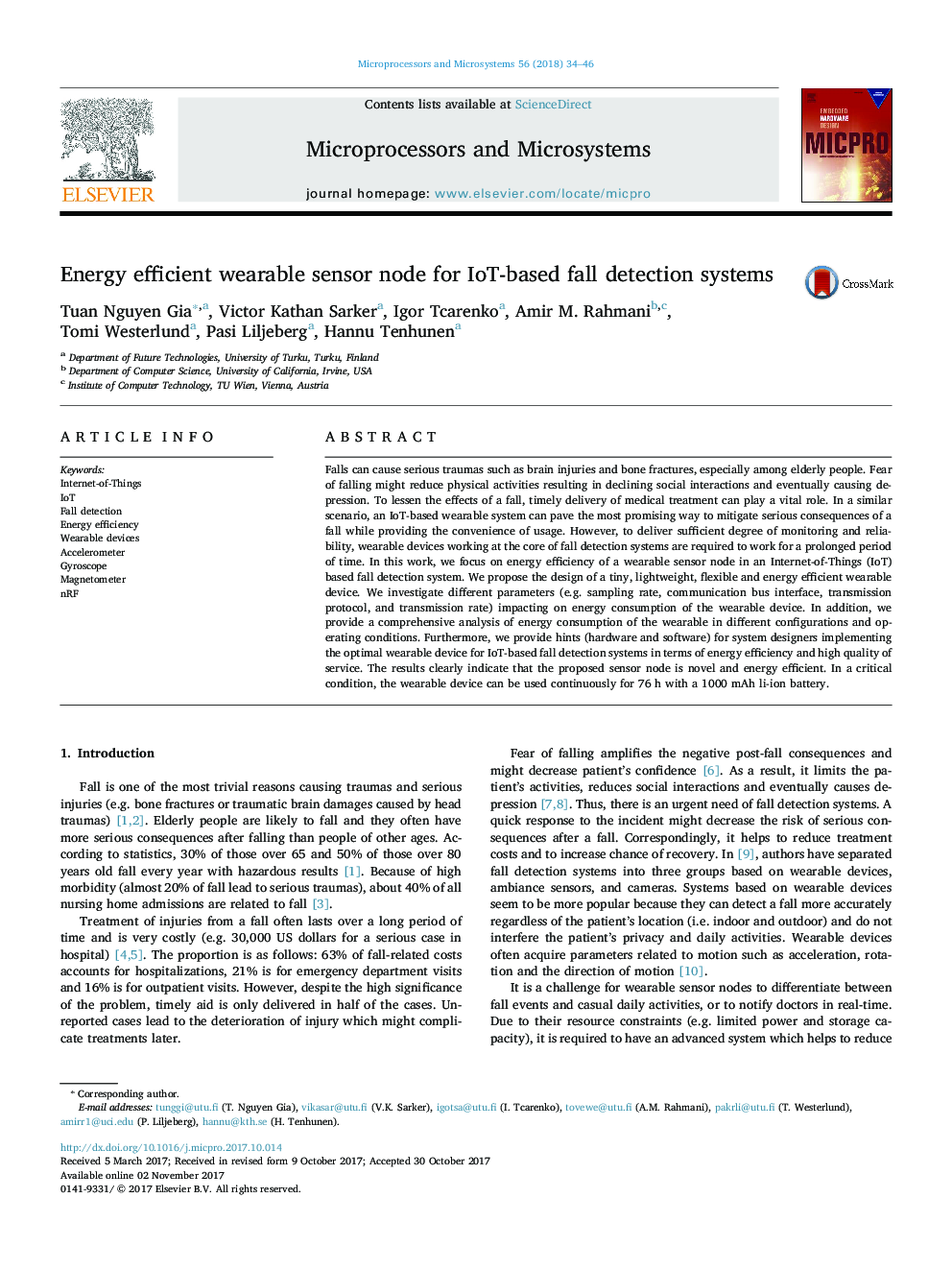| Article ID | Journal | Published Year | Pages | File Type |
|---|---|---|---|---|
| 6885932 | Microprocessors and Microsystems | 2018 | 13 Pages |
Abstract
Falls can cause serious traumas such as brain injuries and bone fractures, especially among elderly people. Fear of falling might reduce physical activities resulting in declining social interactions and eventually causing depression. To lessen the effects of a fall, timely delivery of medical treatment can play a vital role. In a similar scenario, an IoT-based wearable system can pave the most promising way to mitigate serious consequences of a fall while providing the convenience of usage. However, to deliver sufficient degree of monitoring and reliability, wearable devices working at the core of fall detection systems are required to work for a prolonged period of time. In this work, we focus on energy efficiency of a wearable sensor node in an Internet-of-Things (IoT) based fall detection system. We propose the design of a tiny, lightweight, flexible and energy efficient wearable device. We investigate different parameters (e.g. sampling rate, communication bus interface, transmission protocol, and transmission rate) impacting on energy consumption of the wearable device. In addition, we provide a comprehensive analysis of energy consumption of the wearable in different configurations and operating conditions. Furthermore, we provide hints (hardware and software) for system designers implementing the optimal wearable device for IoT-based fall detection systems in terms of energy efficiency and high quality of service. The results clearly indicate that the proposed sensor node is novel and energy efficient. In a critical condition, the wearable device can be used continuously for 76Â h with a 1000 mAh li-ion battery.
Keywords
Related Topics
Physical Sciences and Engineering
Computer Science
Computer Networks and Communications
Authors
Tuan Nguyen Gia, Victor Kathan Sarker, Igor Tcarenko, Amir M. Rahmani, Tomi Westerlund, Pasi Liljeberg, Hannu Tenhunen,
